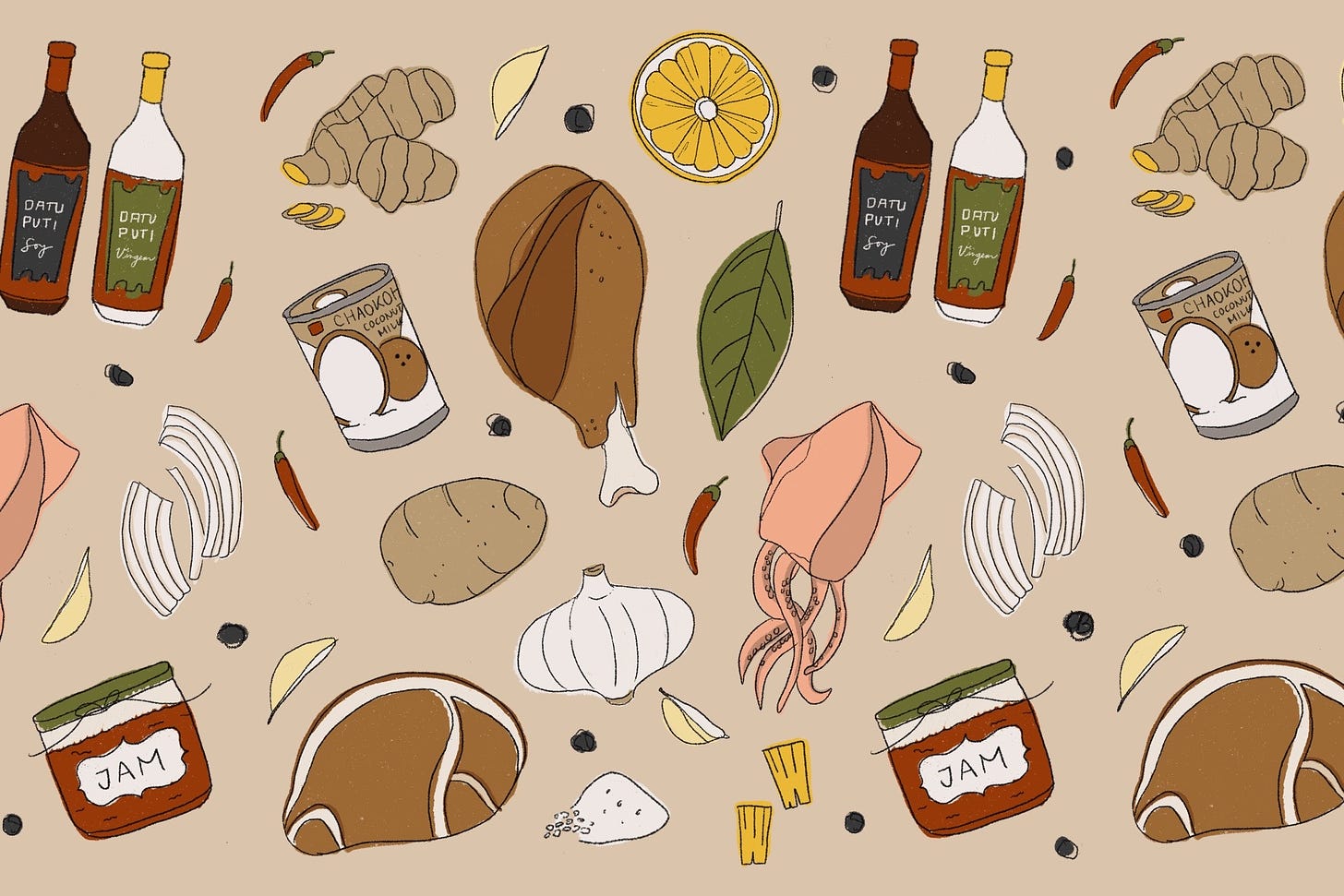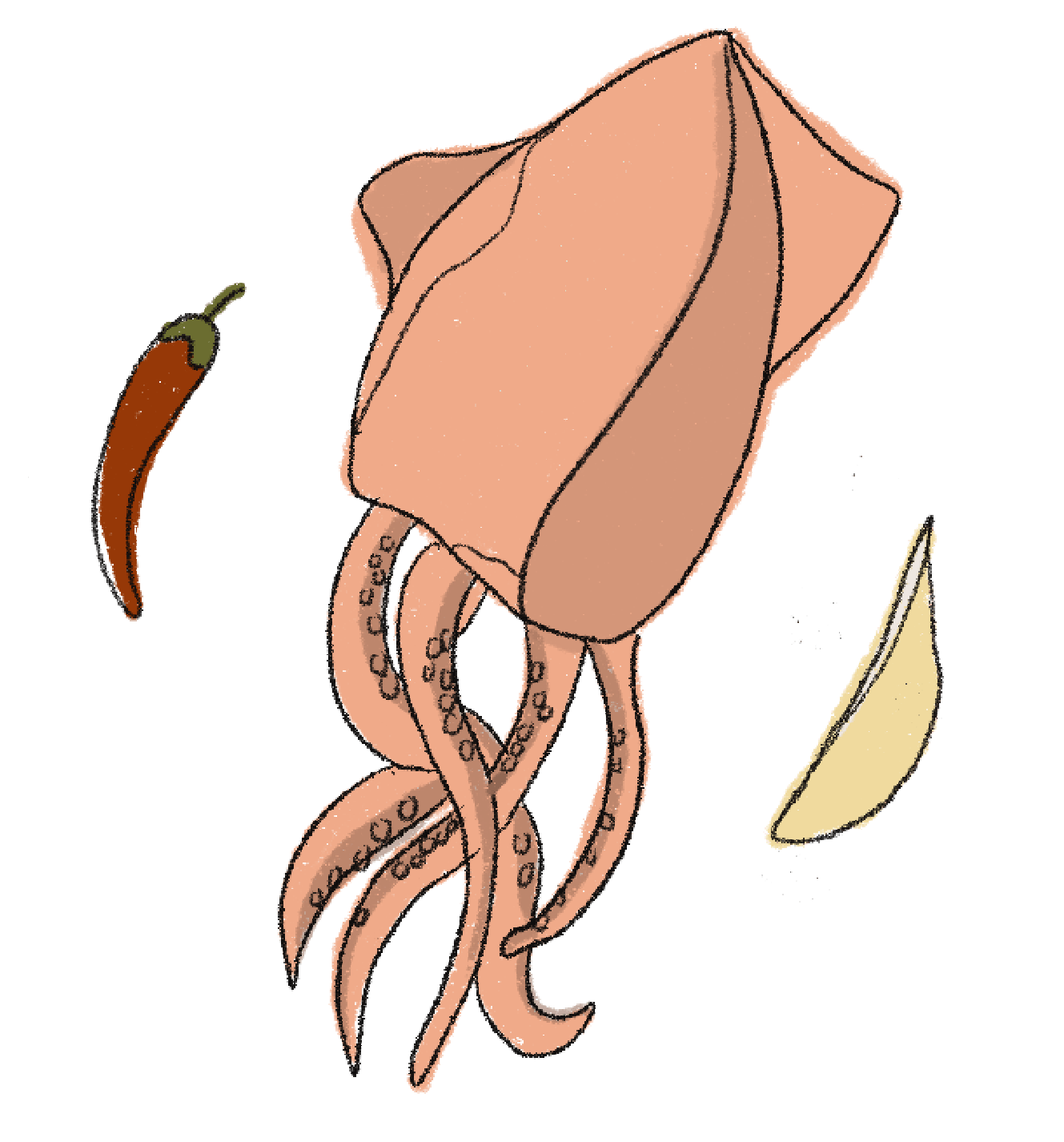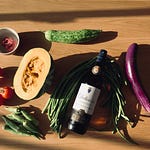Writing this issue comes from a place of privilege. Some countries have re-entered lockdown. Vaccination rollouts have surfaced bigger inequities in our systems. Extreme weather is devastating many parts of the world. Does a discussion on adobo even have a place in the world’s current turmoil? If we use this space wisely, we believe it does. While this issue was birthed as a gut reaction to adobo standardization, it has morphed into conversations beyond our pockets of the globe. If you’d like to further engage with us and those interviewed, we welcome discourse in the comments section below (GIFs encouraged).
I first came across the concept of standardizing a dish in 2018, after reading Matt Goulding’s book, Pasta, Pane, Vino. In his book, he dedicates an entire chapter on Naples and the pizza napoletana. Goulding reveals how in his youthful vigor, he finds himself enrolled at a professional pizza-making course at the Association Verace Pizza Napoletana (AVPN), which, he says,
“is the closest thing to a governing body in the world of pizza, founded by a coalition of revered pizza makers in Naples who recognized in pizza’s global popularity an existential threat to the creation they consider uniquely theirs.”
In fact, if you search “pizza standardization” online, the top result is the AVPN’s website. According to their site, the set of codified rules was written “in order to recognize and differentiate the True Neapolitan Pizza from the other type of pizza, giving it the maximum dignity” and to “protect the tradition of this old recipe and its secrets, defending its uniqueness and peculiarity.”
Download the 14-page regulation guideline and you’ll get a more in depth description on cooking and ingredient requirements, from the ideal 00 flour component percentages down to the exact centimeter height required for the crust. A few more examples are pulled directly:
The centre should be particularly soft to the touch and taste and should be 0.25 cm in height (+/- 10%), where the red of the tomato is evident, and to which the oil…, the green of the oregano and the white of the garlic has perfectly amalgamated
… the following variations of fresh tomatoes can be used: “S.Marzano dell’Agro Sarnese-nocerino D.O.P”., “Pomodorini di Corbara (Corbarino)”, “Pomodorino del piennolo del Vesuvio” D.O.P.
The consistency… should be soft, fragrant, easy to manipulate and fold. The crust should deliver the flavour of well- prepared, baked bread.
On another much more recent occasion, a conversation with my friend Arnold Byun of With Warm Welcome somehow spiraled into a discussion on South Korea’s global influence (probably also because sake will do that). Arnold briefly touched on the nation’s push to export Korean dishes to promote the country’s image ranking. When the news to standardize adobo was released, I decided to dig more into what he had mentioned.
Before South Korea shifted into an influential powerhouse and before soondobu, tteokbokki, chimaek, kimchi, or bulgogi became ubiquitous in the global culinary landscape, the country struggled to recover from a tattered national image. While Korean pop culture gained recognition, South Korea’s national status remained low in comparison to its economic power. In the 2008 Roper Nation Brands Index, which "factors in exports, governance, culture, people, tourism, immigration, and investment to determine a country’s cultural, political, and economic influence,” South Korea placed 33 out of 50. President Lee Myung-bak “pledged to upgrade Korea’s image and gain its rightfully owed respect in the international community.” The president worked closely with the Presidential Council on Nation Branding to spread Korean culture to boost the county’s likeability and credibility. Hansik (Korean food) was used as the primary tool in gastrodiplomacy.
The South Korean government pursued court cuisine as the representative, yet there was pushback because of the belief that it “marginalized local culinary heritage by excluding regional, popular, and fusion foods.” Debates followed. A popular Korean-American food blogger suggested fusion foods such as budae jigae and jajangmyeon to be more appropriate, arguing that these dishes “reappropriated global influences to create a fluid Korean identity without whitewashing its past” and held a special place as comfort foods. Dishes with strong local identity such as sakhin hongeo (fermented sting ray) were dismissed as too “controversial and unpalatable” for the global stage.
In South Korea, the government’s push for international recognition sparked negotiations on national identity. In Naples, standardization exists to preserve a dish’s regional integrity. I bring up these real world examples in an effort to better contextualize adobo within the rubric of standardization.
DTI Announces National Standards on Popular Dishes
On July 9, 2021, the Depart of Trade and Industry - Bureau of Philippine Stands and the Technical Committee on Filipino Dishes (BPS/TC 92) announced they would develop national standards on popular dishes such as adobo, sinigang, lechon, and sisig. The committee is led by chairperson Chef Glenda Barretto, founder of Via Mare Corporation, and vice-chairpersons, Chef Myrna Segismundo (from Food Writers Association of the Philippines) and Chef Raoul Roberto Goco (from Hotel and Restaurant Association of the Philippines). The committee board sounds promising, joined by representatives within academia and with cultural, restaurant, trade, and science backgrounds (any affiliation with political groups is unstated).
From their statement, the logic behind standardizing dishes such as adobo is that, “There will be different approaches and opinions [on cooking Philippine Adobo]. As long as I have, say one to three steps, it’s this recipe. Anything else you add to it is a variation to the cooking technique.”
In a followup statement surrounding backlash, they declared that the decision to standardize adobo is for international promotion and is part of “groundwork to develop more creative industry exports.”
To Standardize or Not?
To be quite honest, my concern doesn’t necessarily lie with the standardization of adobo, although my gut reaction was indeed one of shock. A standard adobo within the Philippines seems fraught. However, emotions aside, how can adobo be tackled objectively and inclusively? Guillermo “Ige” Ramos, a Filipino food historian (among his many titles), shared a dish deconstruction built from his ethnographic study of people cooking adobo from various places around the country. He proposed six distinctive elements: aromatics, salty/savory medium, acid, protein/vegetable, fat, and state (ie dry, saucy, soupy, etc). Yasmin Tayag shares her creative interpretation:
“I was looking for a metaphor that might capture what standardizing those base notes would mean to me, and it’s kind of like when you are learning jazz. In jazz, you have to learn the blues scale. There are a certain set of notes that have to be in one scale. Then you could do whatever you want with it and make it into your own thing. But you have to know the fundamentals first before you can make it your own.”
In a country still questioning a collective national identity (as well as struggling with economic, political and social instability and hardships), the decision to standardize adobo may have come at a misstep. From his home in Manila, Sonny Thakur enters the conversation with a local’s perspective and as someone who has made effort to document Philippine culture:
“Another reason we’re so worked up on the whole adobo thing was… it does feel like an optics thing. Hey, look at us, we’re trying to promote a national dish versus going for the roots of the problem. It doesn’t tackle that root cause, maybe we have to work on things like our food security as well. We’re probably one of the biggest importers of rice, and a couple of generations ago, we were the biggest exporters. So these are conversations that may have been put on the back-burner as well because of the adobo conversation and this is something I think everyone should look into.”
How then can the government redirect efforts to resurrect the nation’s regional diversity marginalized by colonial rule? Isi Laureano navigates this question by offering education as a potential solution:
“I think the best way to find our identity is really, just put it in the curriculum, make books on our cuisine and really educate. [Philippine Food, Cooking, & Dining Dictionary] has been really helpful for me. This is in different languages, different dialects. Yung pa lang, language pa lang, dialects pa lang. We have so many words to use for just one adjective. There’s just so many meanings.”
The announcement also comes at a time when so many in the diaspora are looking to reconnect with their roots and are finding a sense of pride in ingredients and regionality. Abi Balingit, who oftentimes bakes with Filipino ingredients and finds inspiration from Filipino childhood snacks, asserts:
“I’m tired of being othered of our food or trying to make it palatable because of this history of being othered. I just feel if we want to celebrate all the regionality of Philippine cooking, it’s okay if it’s too complicated.”
I also recognize that in a highly globalized world, one in which we are consuming culture and are connected more than ever, dishes are bound to be diluted. Is standardization then a proactive step in preserving the integrity of adobo?
“If you don’t have that proper standardization of food, everything would just be muddled up. That also comes with hierarchy of information, too. If you just let it go on its own, by the time you know it, people will be making adobo but in different kinds of flavoring and you’ll probably lose that… without the proper branding on it.” — Luisa Brimble
But I also wonder, can this push for standardization be used to better place national dishes within a contextual framework and educate the masses on regional cuisine? Rachel Lucero, who infuses Philippine history into her Youtube food series, the Sago Show, probes into repercussions of power dynamics, responding:
“The nation could put up an image of what the Philippines is, but to me it’s not possible, in the sense that, if you do that, you flatten the entire variety of people that live within the Philippines that shouldn’t be just condensed to one image so that we’re easily appreciated or consumed by other people.”
Paolo Espanola, who has worked in numerous kitchens, offers his perspective:
“I mean we’re human, pattern recognition is just inherent in us. We’re bound to find a pattern whether we vocalize it or not. So even if we say let’s not standardize it, something in us is going to tell us whether it’s adobo or not. So I don’t see why not try - even though human language is so limited - to try and at least standardize it. There are benefits. It does give people guidelines on what is different between an adobo and a paksiw or how is that different from pinamalhan. Without these standardizations, it’s very hard, or at least it’s much harder for the common person to then be able to explain to someone, well, this is this and this is not this.”
Construction of identity is highly personal and partially carved through culture. If anything, the announcement has surfaced more awareness and defense of our collective identity. While the conversation on adobo standardization is a complex web, the agitation is carrying questions of how much we truly know about our culture, our people, ourselves, and the place we call home.
“I think adobo makes sense as a national dish. I do feel a little hesitancy of a national dish in general just because I feel that’s very much choosing a very particular part of cultural groups within the county. To this extent, I think adobo works for me. I think it says a lot about the way Filipinos have created our culinary traditions and the way we’ve learned to adapt.” — Bettina Makalintal
Cathie Carpio, a longtime researcher of Philippine cuisine, emphasizes the flux of food ways and how we too, must adapt:
“You have to be postmodern about food. I think, whether I like it or not, adobo is the cooking process and dish that can show us how diverse Filipino cuisine is. [Some]… see Filipino cuisine as an entity that doesn’t evolve which is not true. Even up to this day, I’ve discovered so many new things, which is weird, because before I would claim that I would know Filipino cuisine because I grew up in the Philippines.”
In culinary discourse, standardization and identity are seemingly contradictory forces; like oil and water, they are opposites that fail to blend. I see this negotiation as the adobo paradox. A paradox is not meant to be solved and that’s okay. Rather, we can find ways to shift the culinary paradigm. Kat Cortez, who has dug roots in trying to achieve fair and sustainable practices, reframes the question instead to amplify, uplift, and restore:
“I wouldn’t have a set process, per se. If I were to do that, I would say, you need to localize. Pick a dish from a region and work with them, to come up with a standard and they get to own that. They get to profit off it. It’s their dish. That’s what’s missing from a lot of dishes in the Philippines. They’re not profiting from the stuff we’re utilizing and promoting to the world. I think that’s the important part. You can’t miss that.”
While you may have come to this issue to find resolution in the argument, I must simply say I am unable to provide one. I think providing a definitive answer would be the easiest thing to do. Instead, I hope that by sharing this collection of voices, you’ll build on your current framework of understanding. Whatever the department’s decision, I have a feeling that we will all continue to carve our own conversations and continue harnessing Philippine culture and cuisine in our own way.
Someone will still be writing about Philippine culture,
reflecting what it means to be Filipino,
teaching adobo classes,
amplifying Filipino ingredients through sugary creations,
documenting the Philippine culinary landscape,
uplifting Filipino voices,
researching Mindanao cuisine,
dissecting the roots of Filipino dishes,
and asking questions on what Filipino food really is and what it can be.
Maybe, just maybe, we’ve begun embracing what researcher Jonathan Pugh considers as thinking with the archipelago: beyond stasis and singularity; beyond boundaries, binaries and dichotomies. We are dispersed but not fragmented, independent yet interdependent. In our ways of being, we are moving our own currents to converge and traject into a greater periphery.
Special salamat to:
In Case You Missed It
Where Does Ube Really Come From?
Current meryenda
Reading Filipino Food Has a New Spokeswoman by Tatiana Bautista and waiting to supercharge my pagkain with sarap sauce.













What Will Become of Adobo?